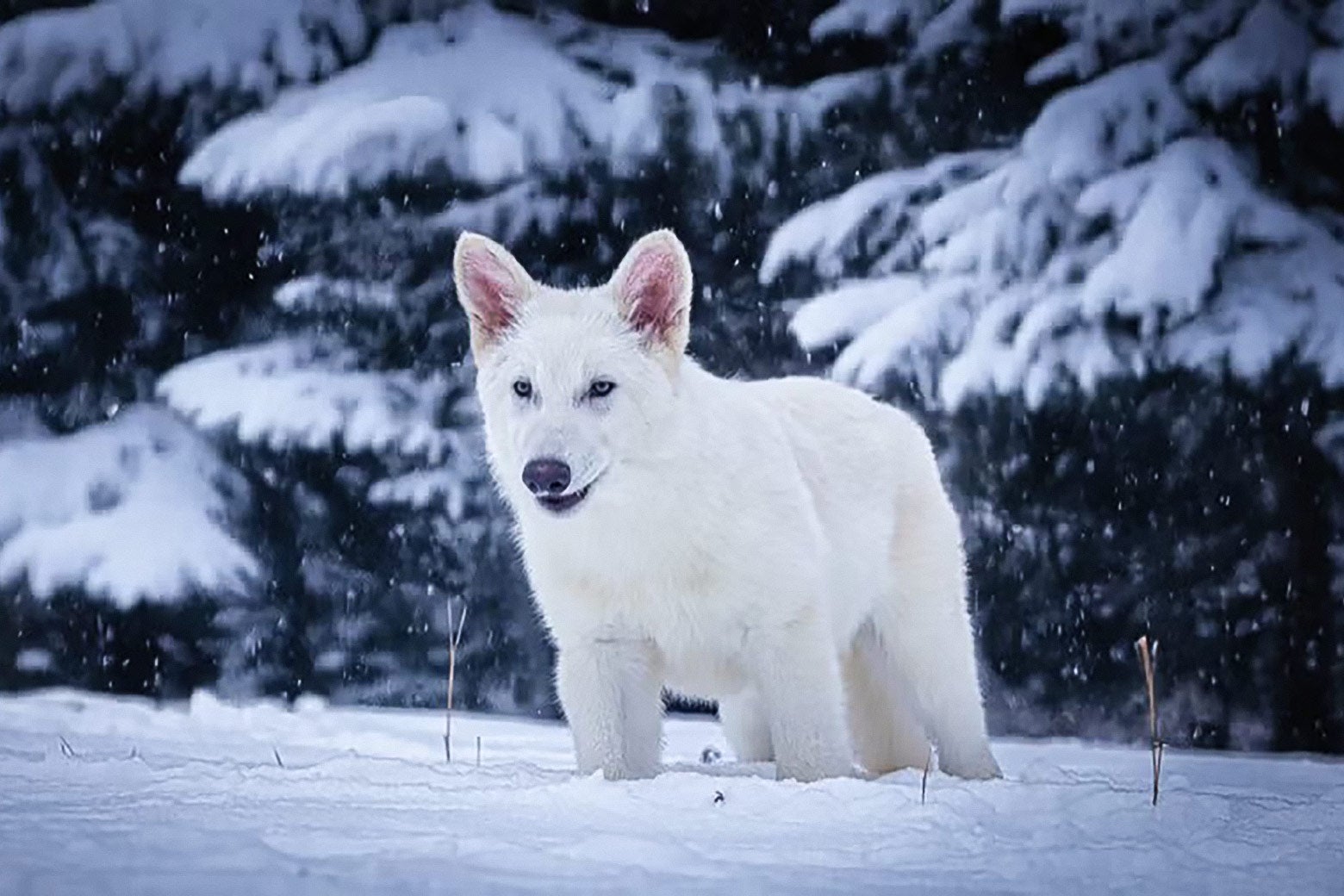THE LEGENDARY ICE AGE PREDATOR
The dire wolf was one of the most formidable predators of Pleistocene North America, hunting in packs and competing with sabertooth cats and early humans. These powerful canines dominated the landscape for over 100,000 years before mysteriously vanishing.

The massive skull of a dire wolf compared to a modern gray wolf (note the broader jaw and larger teeth)
Dire Wolf Quick Facts
- Scientific Name: Canis dirus ("fearsome dog")
- Time Period: Late Pleistocene (125,000-9,500 years ago)
- Size: 5 feet long, 150 pounds (25% larger than gray wolves)
- Bite Force: 30% stronger than modern wolves
- Habitat: Forests, grasslands, and tar pits of North America
- Famous Site: La Brea Tar Pits (over 4,000 specimens found)
DIRE WOLF VS. MODERN WOLF
BEAST
Dire Wolf Characteristics
- Stocky, muscular build (like a wolf on steroids)
- Short legs adapted for power over speed
- Massive head with bone-crushing teeth
- Specialized for hunting megafauna
- Lived during Ice Age (went extinct 9,500 years ago)
HUNTER
Gray Wolf Characteristics
- Leaner, more athletic build
- Long legs for endurance running
- Smaller head with precise biting teeth
- Adaptable to various prey sizes
- Survived Ice Age and still exists today

Artistic reconstruction of dire wolves competing with sabertooth cats at a carcass
THE GAME OF THRONES CONNECTION
While HBO's direwolves were fantastical creatures the size of small horses, they were inspired by real paleontological discoveries. George R.R. Martin took creative license but captured their imposing nature:
| Aspect | Game of Thrones Direwolf | Real Dire Wolf |
|---|---|---|
| Size | Pony-sized (5-6 feet tall) | Wolf-sized (2.5 feet tall) |
| Behavior | Loyal to Stark children | Wild predators |
| Abilities | Warg connection, near-human intelligence | Standard wolf intelligence |
| Strength | Could kill armored knights | Could crush bison bones |
"The direwolves are more than just pets in Game of Thrones - they're symbols of House Stark's connection to the old, wild magic of the North, much like real dire wolves represented the untamed wilderness of prehistoric America."
WHY DID THEY GO EXTINCT?
The disappearance of dire wolves around 9,500 years ago remains a scientific mystery with several competing theories:

Dire wolf skeletons from the La Brea Tar Pits, where thousands were trapped
Leading Extinction Theories
- Climate Change: Warming after Ice Age changed ecosystems
- Prey Extinction: Loss of megafauna like mammoths and giant sloths
- Competition: More adaptable gray wolves and humans
- Disease: Possible new pathogens from other canids
Recent research suggests their specialized diet and inability to adapt to smaller prey sealed their fate, while gray wolves survived by being more flexible hunters.
THE GENETIC SURPRISE
A 2021 DNA study revolutionized our understanding of dire wolves:
"Dire wolves were so evolutionarily distinct from modern wolves and coyotes that they likely could not produce fertile offspring with them. They represent the last of a now-extinct lineage that diverged from living canids around 5-6 million years ago."
This means dire wolves weren't just bigger versions of today's wolves, but rather distant cousins that evolved similar traits independently (an example of convergent evolution).

The dire wolf's place in the canid family tree, showing its separate lineage
COULD WE BRING THEM BACK?
With advances in genetic engineering, scientists have speculated about de-extinction possibilities:
De-Extinction Challenges
- No living close relatives for genetic comparison
- Incomplete ancient DNA samples
- Uncertain ecological role in modern ecosystems
- Ethical concerns about reviving predators
While less likely than mammoth de-extinction, some researchers propose using gray wolves as surrogate mothers for genetically modified embryos that approximate dire wolf traits.

Modern gray wolves - the survivors that outlasted their more powerful cousins
THE DIRE WOLF LEGACY
Though extinct for millennia, dire wolves continue to capture our imagination:
- Cultural Icon: From Game of Thrones to Dungeons & Dragons
- Scientific Importance: Over 4,000 specimens at La Brea Tar Pits
- Ecological Lesson: Warning about overspecialization
- Evolutionary Mystery: Their unique lineage challenges canid classification
These magnificent predators remind us of a wilder, more dangerous world that existed just a geological moment ago.